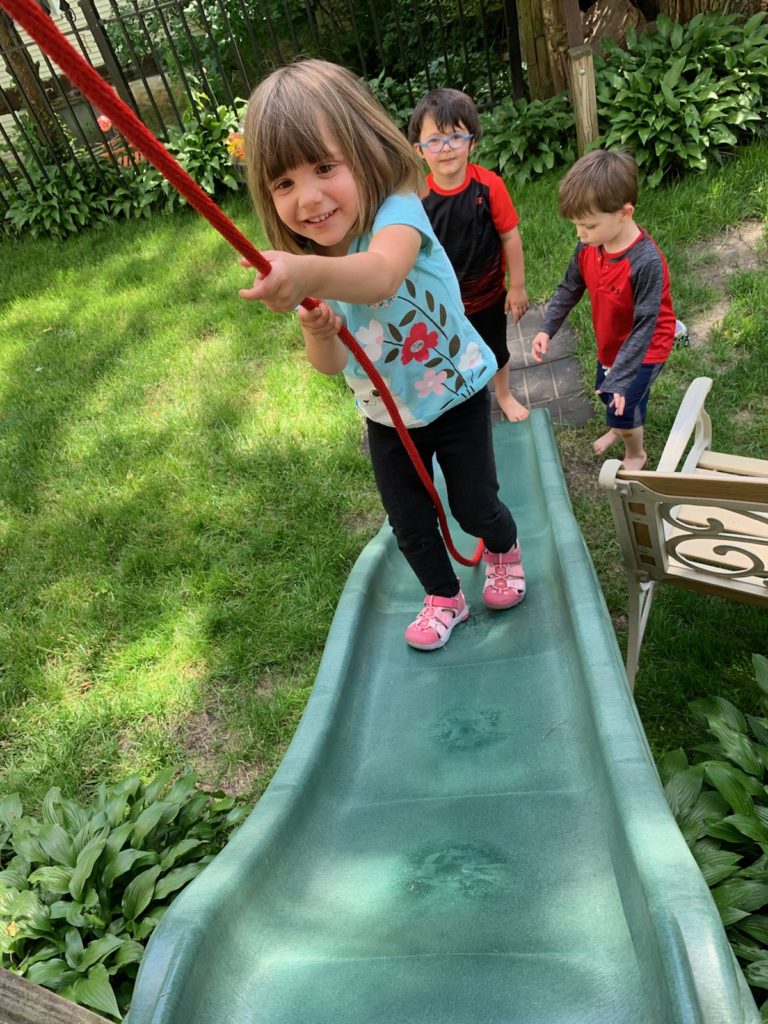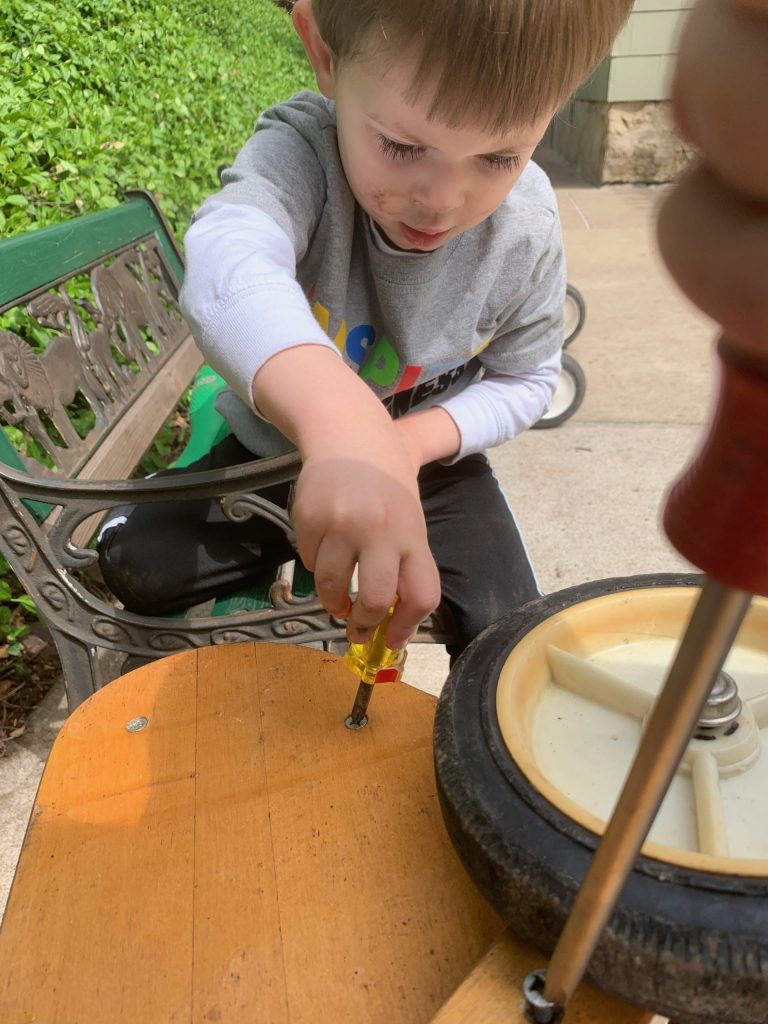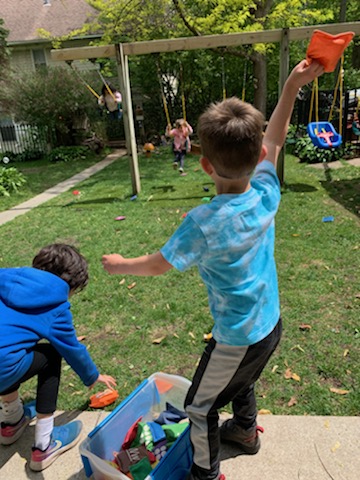Crossing the Midline for STEM Learners
It’s my turn! It’s my turn!
Maya is jumping up and down, eagerly anticipating her chance to climb UP the slide with the assistance of a rope.
“Whoa,” she says with a giggle. “This is hard!”
The children are no strangers to climbing up a slide. But the addition of a rope challenges them to try out new climbing techniques, work new muscles and develop new strategies for success.
We often play this game to help the children build muscle strength, develop gross-motor and fine-motor skills and reap the many benefits of “crossing the midline.”

So what exactly is the midline? It’s an imaginary line that separates the left and right halves of the body, running directly down the center of the body from the top of the head and between the eyes and down through the belly button to the feet. Midline-crossing activities require a child to spontaneously reach, step or look across this imaginary line. When children rotate their bodies or angle their upper or lower bodies to the left or the right, they are also crossing the midline.

Why is crossing the midline so important for brain development and learning?
To answer that question, we need to consider the architecture of the brain, which is divided into two sides called the left and right hemispheres. These two hemispheres are connected by a thick bundle of nerves called the corpus callosum (see photo above). These nerve fibers enable the two hemispheres of the brain to communicate so that they can send signals back and forth to coordinate learning and movement.
When a hand works in the space on the same side of the body, only one brain hemisphere is used. When a hand or a leg crosses over the midline to complete a task on the opposite side of the body, both hemispheres of the brain are used. Studies have shown that infants, young children and individuals with disabilities generally struggle more with activities that require them to cross the midline.
When children struggle to carry out activities that require them to reach, step or look across the midline of the body, this may indicate that the left and right hemispheres of the brain are not communicating across the corpus callosum. This is known as “midline-crossing inhibition.”
To develop strong bodies AND strong brains, children must engage in activities that require them to cross the midline and use both of the brain’s hemispheres. As children engage in these activities, they are not only strengthening communication across the corpus callosum, but developing important skills such as balance, coordination and spatial awareness.

How do you know if a child is having difficulty crossing the midline? In order to read and write, a child must be able to move fluidly from one side of the paper to the other. A child with midline-crossing inhibition might switch hands during an activity because he or she gets “stuck” on one side of the body. A child may also struggle to transfer a toy to the other side and turn his or her entire body to avoid crossing the midline.
Another clue that children are having trouble crossing the midline can be found in their eyes. If you ask children to follow an object with their eyes, they should be able to do so with smooth, controlled movements up and down and from right to left. If children are having trouble crossing the midline, you’ll often see a little bounce in their visual tracking right at the midline point when they are tracking the object from left to right or right to left.

Another telltale sign for me is when children are putting on socks and shoes. Or, rather, NOT putting on their socks and shoes. Several skills are required to perform these tasks, including hand-eye coordination, pincer grip and, yes, crossing the midline!

Children who write or draw on only one side of the paper (usually their dominant side) are also having difficulty crossing the midline. They will never write on the other side of the paper, or they may only draw on the top or the bottom. If you see them rotating their entire trunk to draw a picture or turning the paper sideways, they are struggling to cross the midline. These children usually have difficulty establishing hand dominance and tend to alternate between hands when coloring, writing, eating or throwing.

When we give children ample opportunities to climb—whether they climb on a stump, a slide, a balance beam or large boulders—we enable them to experiment with basic physics such as balance and gravity, increase their vestibular sensations and overcome physical challenges.
Children who learn good balance and stability also develop better coordination and body awareness, which leads to better concentration. In my January 15 blog post, I will share some cross-lateral activities for developing body awareness.